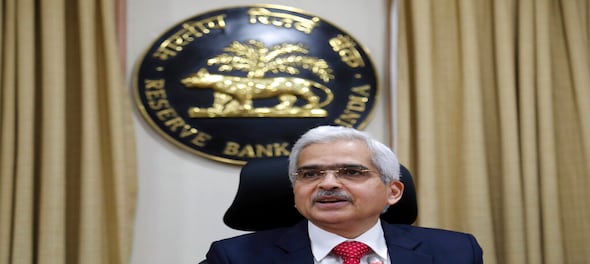
The Reserve Bank of India has sprung a surprise with its decision to pause on rate hikes. What could this spell? What the Reserve Bank of India (RBI) did on Thursday by pausing on rate hikes is similar to what the US Federal Reserve (Fed) did on March 22 with its 25-basis-points rate hike: kept options open.
While experts were betting on a 25-basis-point rate hike by the RBI on Thursday, they also projected that no more rate hikes would follow. By keeping the benchmark repo rate unchanged at 6.5 percent, the RBI has smartly kept the option to hike interest rates at its next meeting if the Fed stays the course on rate hikes.
Quite like the Fed that held back from a 50-basis-point rate hike to give it time to assess the real condition of the US banking system, which several project may see more things breaking.
So, does this mean that it is just status quo, and rate hikes could resume after this pause? Not likely.
Not a pivot, but a shift
By not hiking interest rates at this meeting, the RBI seems to be signalling that it is not wanting to pursue much longer with rate hikes. In a way, it has taken its foot off the accelerator and shifted to cruise mode. Will another 25-basis-point rate hike follow? Possible. But that was already baked in. The expectations were of a quarter percent hike and then a pause. Even if the RBI goes in for one more rate hike, that’s par for the course. But holding that last card close to the chest helps more than making your last play and then being out of options.
What this also suggests is that the RBI seems wary of going too far with its rate hikes. The Fed seems to be similarly positioned, as it can scarce afford to break anything more in the financial system with its persistent tightening. The central banks are clearly in wait-and-watch mode. And like the industry associations here are batting for an end to rate hikes by the RBI, the bond markets in the US are signaling a wide divergence from the Fed’s stated stance.
And while the US bond markets have been projecting a pivot for some time now, Fed Chair Jerome Powell clearly ruled out rate cuts at his last meeting. But nothing is a constant, remember. The Fed has shifted its position in the past, and it can again. The street is clearly betting big on it.
In a nutshell, the RBI seems to be signaling there isn’t much more to go on rate hikes. And that can be good news for rate-sensitive businesses like the housing sector that were a fearing a sharp drop in demand ahead.
The growth surprise
Just after World Bank lowered its FY24 GDP growth outlook for India to 6.4 percent from 6.6 percent earlier and Asian Development Bank followed suit with a trim from 6.7 percent to 6.4 percent, the RBI upped its growth expectation by a sliver to 6.5 percent from 6.4 percent last Thursday. It isn’t the 0.1 percent or 10 basis point change in growth projection that’s notable but the direction of the RBI’s expectation. At a time when many economists are cutting back on their India growth expectations — some have it at 5.5 percent — the Indian central bank has gone in the reverse direction. That’s notable and positive.
If growth does steady at 6.5 percent in FY24, that would be a good outcome for the economy, which several feared was losing steam. Perhaps the RBI’s move to pause on rate hikes will give a fillip to consumption with fence sitters shedding worries over the likely impact of rising interest rates on their household budgets.
What’s more notable is that RBI has revised its estimate despite an even more cloudy external sector outlook—given that a US recession could crimp demand for exports from India. The one risk to its estimation of 5.2 percent inflation in FY24 is oil prices, which is now estimated to average $85 per barrel in the year (for the Indian crude basket), down from $95 estimated earlier. If inflation surges again, all bets would be off the table.
For now, RBI’s pause seems pragmatic and pro-growth. And that should be good news for businesses and the markets.
Check out our in-depth Market Coverage, Business News & get real-time Stock Market Updates on CNBC-TV18. Also, Watch our channels CNBC-TV18, CNBC Awaaz and CNBC Bajar Live on-the-go!


Father and son reside on same street but vote for Andhra Pradesh and Telangana separately
May 7, 2024 4:40 PM
Lok Sabha elections 2024: Radhika Khera, Shekhar Suman join BJP; meet all who are now in saffron party
May 7, 2024 3:54 PM
2024 Lok Sabha Elections | Why phase-3 is a tightrope walk for all parties
May 7, 2024 1:08 PM

